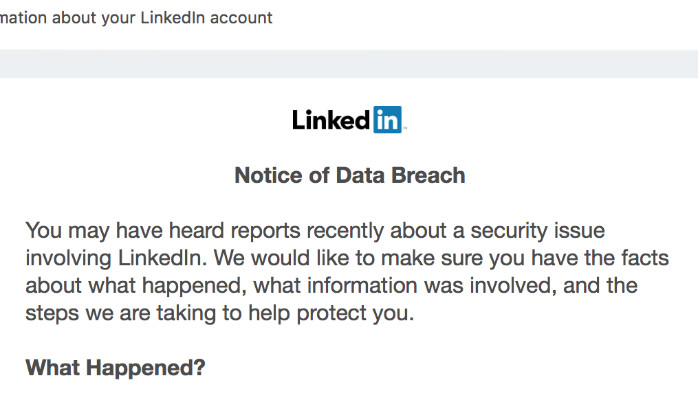LinkedIn Data Breach: Analyzing the 2012 breach resulting in stolen user credentials.
Technical Analysis of the 2012 LinkedIn Data Breach: Decrypting the Theft of User Credentials

The 2012 LinkedIn data breach remains one of the most notable incidents in cybersecurity history, involving the compromise of millions of user credentials. This technical analysis aims to provide an in-depth examination of the breach, focusing on the attack vectors, cryptographic weaknesses, and mitigation strategies employed in response.
Unraveling the Attack Vector: The LinkedIn data breach was executed through a multi-stage attack, beginning with the exploitation of vulnerabilities in the company's password storage mechanisms. Attackers gained initial access to LinkedIn's systems through a combination of social engineering tactics and software vulnerabilities, allowing them to exfiltrate user credential databases.

Exploiting Cryptographic Weaknesses: Central to the success of the breach was the exploitation of cryptographic weaknesses in LinkedIn's password storage methodology. The company stored user passwords using the SHA-1 hashing algorithm without the application of cryptographic salts, a critical oversight that rendered the hashed passwords susceptible to brute-force and dictionary attacks. Attackers leveraged specialized hardware and software tools to crack the weakly hashed passwords, subsequently accessing plaintext credentials.
Analyzing the Impact: The impact of the LinkedIn data breach was profound, with millions of user accounts compromised and sensitive information exposed. Beyond the immediate financial and reputational ramifications for LinkedIn, the breach underscored broader concerns regarding the security of user credentials and the importance of robust password management practices.
Cryptographic Mitigation Strategies: In response to the breach, LinkedIn implemented several cryptographic mitigation strategies to enhance the security of user credentials. This included the adoption of stronger hashing algorithms, such as bcrypt or SHA-256, along with the introduction of cryptographic salts to mitigate against brute-force attacks. Additionally, the company bolstered its authentication mechanisms, introducing multi-factor authentication (MFA) to provide an additional layer of security for user accounts.
Lessons Learned and Best Practices: The LinkedIn data breach serves as a critical lesson for organizations regarding the importance of robust cryptographic practices and proactive security measures. Key takeaways include the adoption of industry-standard hashing algorithms, the implementation of cryptographic salts to enhance password security, and the deployment of multi-factor authentication to protect against unauthorized access.
Conclusion: The 2012 LinkedIn data breach stands as a testament to the ongoing challenges posed by weak cryptographic practices and the critical importance of robust password security measures. By learning from past incidents and implementing best practices in cryptographic hashing and password management, organizations can fortify their defenses and mitigate the risk of similar breaches in the future. Through continuous vigilance, collaboration, and adherence to industry standards, we can collectively strengthen the security posture of digital ecosystems and safeguard the integrity of user credentials.


